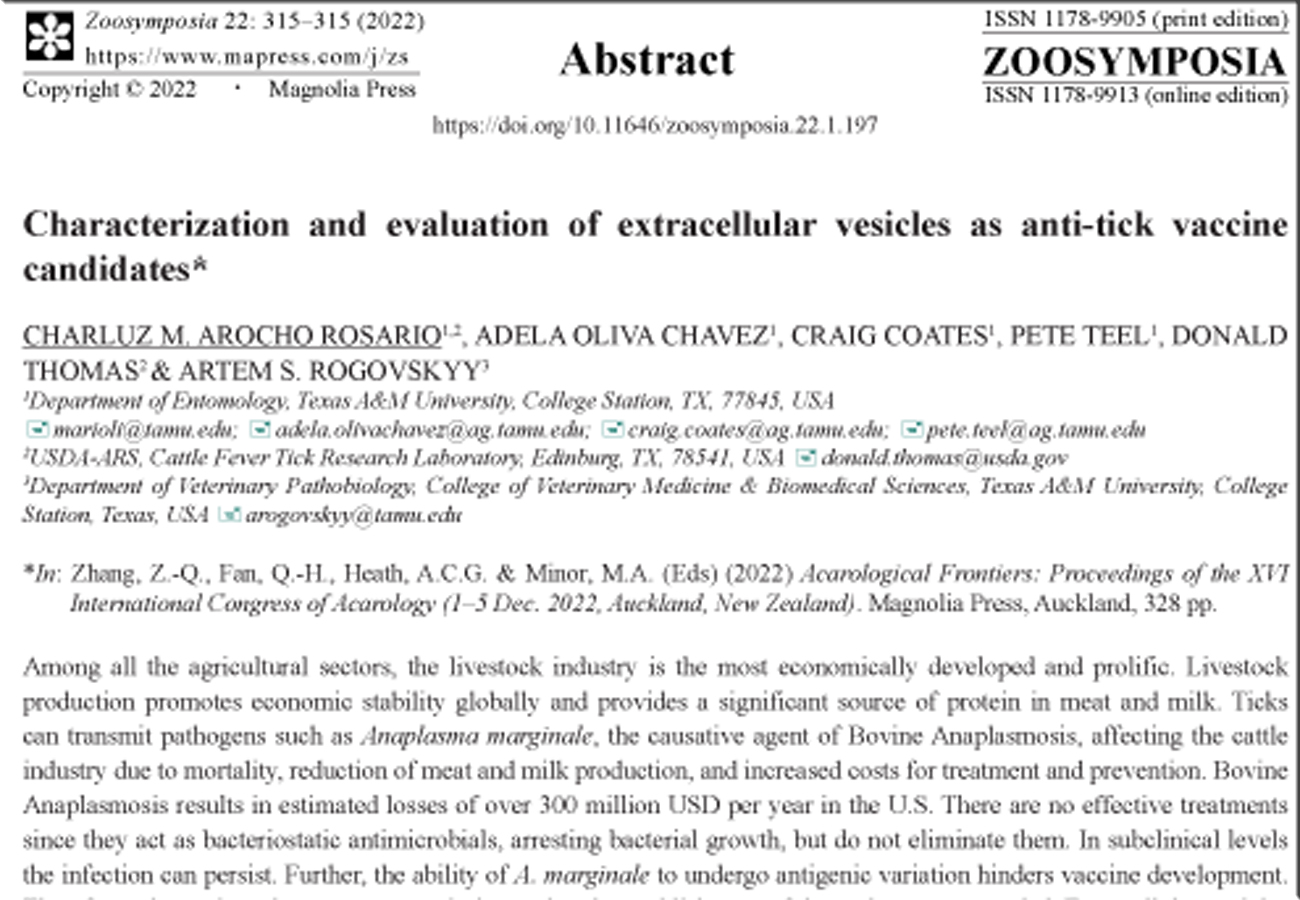Abstract
Among all the agricultural sectors, the livestock industry is the most economically developed and prolific. Livestock production promotes economic stability globally and provides a significant source of protein in meat and milk. Ticks can transmit pathogens such as Anaplasma marginale, the causative agent of Bovine Anaplasmosis, affecting the cattle industry due to mortality, reduction of meat and milk production, and increased costs for treatment and prevention. Bovine Anaplasmosis results in estimated losses of over 300 million USD per year in the U.S. There are no effective treatments since they act as bacteriostatic antimicrobials, arresting bacterial growth, but do not eliminate them. In subclinical levels the infection can persist. Further, the ability of A. marginale to undergo antigenic variation hinders vaccine development. Therefore, alternatives that target transmission and early establishment of the pathogen are needed. Extracellular vesicles are small membrane blebs secreted by eukaryotic cells that act in cell-to-cell communication. These vesicles can be divided into exosomes and microvesicles, depending on their mechanism of biogenesis and secretion. Recent studies, and my preliminary data, have shown that tick extracellular vesicles carry proteomic material that is conserved among different tick species. This proteomic material can be used as a vaccine candidate for the development of anti-tick vaccines. We hypothesize that these vesicles have potential as vaccine candidates for tick control. To test this hypothesis, we will: 1) Characterize the vesicle populations secreted by Dermacentor andersoni, Amblyomma americanum, and Rhipicephalus microplus ticks, 2) Define the best adjuvant-vesicle combination to trigger strong humoral and cellular responses in cattle, and 3) Determine the effectiveness of extracellular vesicle-derived vaccines for the management of tick populations in semi-field conditions. The emergence of acaricidal resistance in tick populations increases the need to develop new alternative control methods. Current vaccines have shown to be protective only against particular tick populations and species, for this reason artificial vesicles containing conserved proteins among different tick species, present a tempting approach that can be mass-produced and commercialized as an anti-tick vaccine protective against different tick species but specially R. microplus. This technology can be applied to other systems and would have a great impact in animal and human health.
References
Rodriguez-Vivas, R.I., Jonsson, N.N. & Bhushan, C., (2018). Strategies for the control of R. microplus ticks in a world of conventional acaricide and macrocyclic lactone resistance. Parasitology Research, 117 (1), 3–29. https://doi.org/10.1007/s00436-017-5677-6
Willadsen P. & Jongejan F. (1999) Immunology of the Tick–Host interaction and the control of ticks and tick-borne diseases. Parasitology Today, 15 (7), 258–62. https://doi.org/10.1016/S0169-4758(99)01472-6
Bowman, A.S., Coons, L.B., Needham, G.R. & Sauer, J.R. (1997) Tick saliva: recent advances and implications for vector competence. Medical & Veternary Entomology, 11, 277–285. https://doi.org/10.1111/j.1365-2915.1997.tb00407.x

